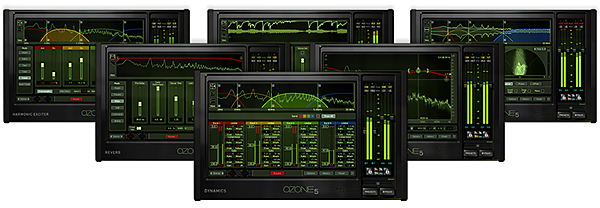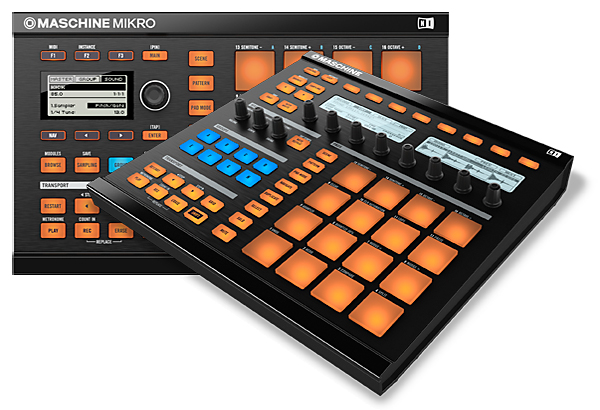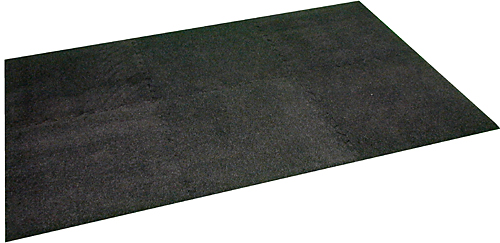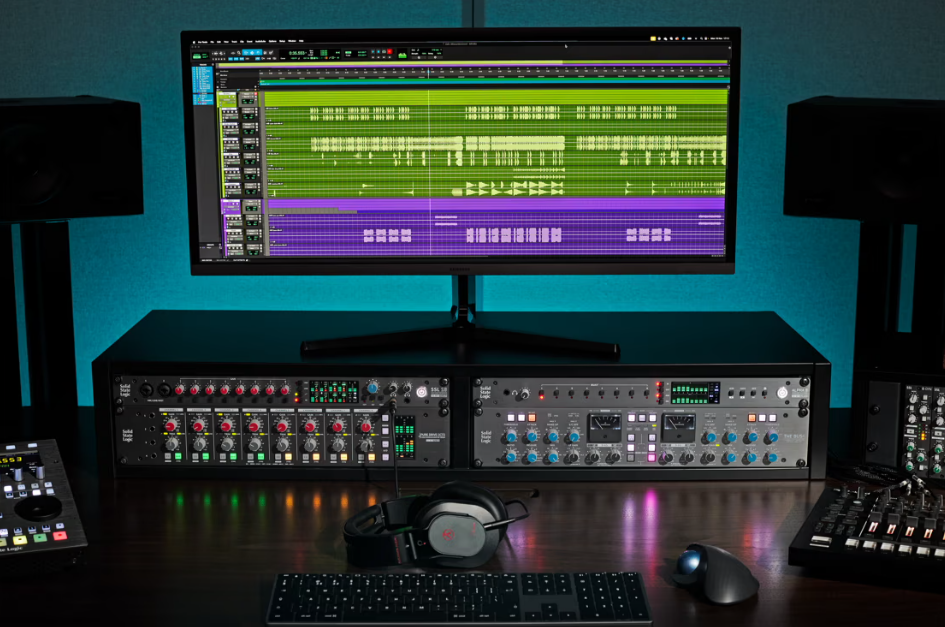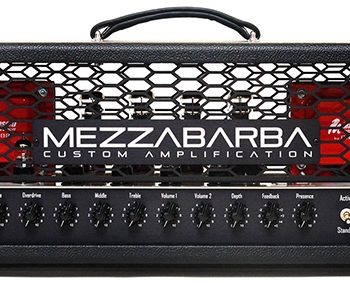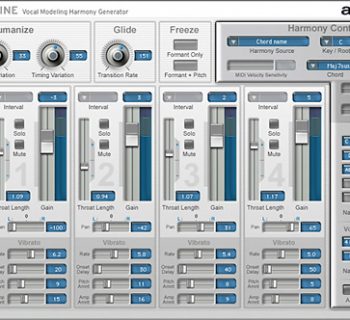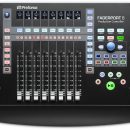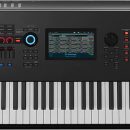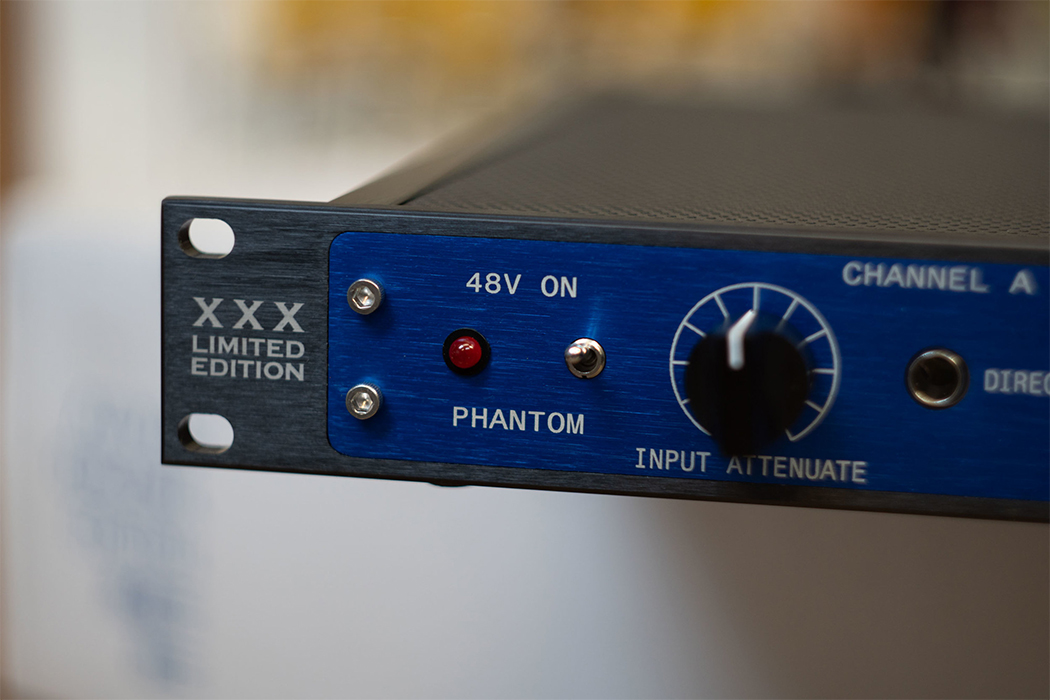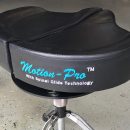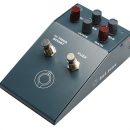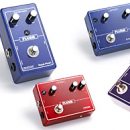 Ozone 5 is the newest installment of iZotope's popular mastering plugin suite, and it contains everything you need to create superb masters in your bedroom (well, everything except years of experience, $10,000 reference monitors, a custom-built studio space, and big ears). EQ, compression, limiting, stereo widening, maximizing, and reverb (yeah we were surprised by this inclusion, too) — everything you need is here.
Ozone 5 is the newest installment of iZotope's popular mastering plugin suite, and it contains everything you need to create superb masters in your bedroom (well, everything except years of experience, $10,000 reference monitors, a custom-built studio space, and big ears). EQ, compression, limiting, stereo widening, maximizing, and reverb (yeah we were surprised by this inclusion, too) — everything you need is here.
The suite comes in two flavors: Standard and Advanced, and we reviewed the Advanced package. While they both contain the same modules in the mastering suite, the Advanced version allows you to separate those modules out and use them as individual plugins for mixing (alas, but not the Meter Bridge, which would have been very cool). It also adds extra functionality to each of the modules.
| Category | Value | Rating |
| Features | 20% | |
| Usability | 25% | |
| Sound | 25% | |
| Documentation & Support | 10% | |
| Price | 20% | |
| OVERALL RATING = 3.7, which earns it a WIHO Award! 3.6 stars or better: Outstanding, WIHO Award 3 stars or better: Worth considering 2 stars or better: Suited to specific needs 1 star or less: Not recommended |
||
Sure, the mastering suite can be a bit heavy on your CPU load, but it's all worth it. If companies aren't going to make bigger and better-sounding plugins, then what's the point of making computers faster, right? It's also a bit expensive, but again, it's all worth it. In fact, we loved Ozone 5 so much that we're sure you will love it, too. Don't even read the rest of this review. Just go to your favorite online retailer, buy the download version right now, and start using it — at least, if you need mastering tools that can pull double-duty on a mix session and sound great no matter how you apply them.
Still with us? OK, so we may have to do a little more convincing than that. Fine, here’s a bit more detail…
Features
Ozone 5 comes with everything you need for mixing and mastering a track. There is an EQ, Multi-band Compressor, and Maximizer, along with effects such as a Harmonic Exciter, Stereo Imager, and Reverb. These can each be used in Stereo or Mid/Side modes.
A cool feature introduced in the Advanced iteration of the effect is that each of the mastering effects modules can now be loaded into a session as independent plugins for mixing use. This is a great addition, as it is nice to be able to use just the Dynamics module on drums, for example. We found a lot of use for of the EQ and the Dynamics processors in our mixes, and the Reverb is excellent as well.
Ozone 5 is also packed full of great presets, which is good news for beginning mixers and hacks who think they can really master music in their bedrooms. There are presets for Ozone as a whole, as well as each individual module, and the presets can be called up while using the modules individually or within the main plugin. This is especially useful for trying out different combinations of presets.
But cool presets weren't the only thing that iZotope packed into Ozone 5. Another huge bonus is the excellent visual representation that is provided by each module. These visuals make it super easy to see what's going on, and each module takes advantage of this in some way. We will say that there is something to be said for plugins having a faithful reproduction of the look of the original unit that they are often modeled after, but taking a more modern approach has allowed iZotope to include a lot of features that may not be possible with vintage emulations.
Below is a breakdown of each module, how some ways in which we found each useful.

Equalizer/Post Equalizer
A fully parametric, eight-band EQ, in which each band can be turned On or Off to suit your needs. While some plug-ins restrict each frequency band to just a subset of the available frequency range, any band in this EQ can be used to adjust any frequency within the 20 Hz – 20 KHz range. If that’s not cool enough, the bonus here is a “Matching” mode that allows you to grab a snapshot of an EQ from source audio and apply it to the EQ curve for another piece of audio. This works very well, and can drastically alter the sound of your recordings. We found this especially useful for matching the color and tone of various drum loops. For modern dance music, the tone of the drums plays a big part in the production, and this EQ feature has become a “must use” for us when grabbing drum loops and parts from various sources.

Reverb
The included reverb is supposed to be a mastering reverb, but in reality it's just a good, all-around reverb. We found that many of the presets do a good job of recreating rooms, which makes this module very useful in a mixing situation, and we're glad that iZotope decided to make it into an individual module.

Harmonic Exciter
Although the Harmonic Exciter is great for adjusting and adding brilliance to an overall mix, it is also great at adjust the tonal color on individual parts. This module is a great stand-in for an EQ, when you want to try something different, and it has the added bonus of being able to overdrive the sound to add a bit of crunch, if you want. The saturation variations sound great, and work well on the master as well as on individual parts in a mix.

Dynamics
We love multi-band dynamics, and use them all the time in both mixes and mastering. This one is great because it can be used as a single-band compressor (the normal style of compressor), or a multi-band one — your choice. The other trick up its sleeve is that it has a limiter, compressor, and gate all in one, which can make for a pretty interesting audio tool. For example, check out this loop that is natural for two bars, then we used the Dynamics module to take out the mids and trim the lows. The loop takes on a totally different characteristic from the original.
| Audio Sample |
| Loop used with permission from Sample Magic's Deep Tech-House. |
| Audio Player |

Stereo Imager
The Stereo Imager does a good job of widening the stereo field, but the trick is that it can do it on separate bands of frequencies independently. There is also a Stereoize button that, when activated, sets a small delay (user adjustable) into the signal to really spread the signal out. Of course, when this button is On, there is flanging with certain sounds, such as kicks, but because of the adjustable frequencies, you can apply this setting to only the hi-hats in a loop, leaving the kick alone.

Maximizer
This features several modes of operation: IRC I, II, and III, Hard, and Soft. These use different amounts of CPU resources, and iZotope is quick to point out in the manual that IRC III may be unusable in real time. There is also a Character fader (which affects the average speed at which the limiter affects the sound), with clear labels indicating how different positions will affect the sound (transparent, smooth, fast & loud). There is also a Transient Recovery button, which forces the maximizer to try to recover attacks that may have been lost in the limiting process.

Meter Bridge
This is an awesome visualizer that goes above and beyond the normal meter readouts of other mastering plugins. First of all, it has all the basics: levels, spectrum analyzer, and stereo analyzer. But it goes one step beyond all that and includes a spectrum analyzer that can analyze the frequencies coming in from various tracks using plug-ins call Meter Taps. Insert these plugins after all your other effects plug-ins on the a track and in the Meter Bridge you can see how the various tracks are relating to each other in a mix. Of course, we're talking about mixing music here, so your ears are going to be your biggest asset, but if you suspect a problem in between some of the tracks, and they're just not sitting right, this can be a powerful visual tool to help you sort things out.
The only drawback to the Meter Bridge is that it is not available in a standalone module, which doesn't make much sense to us. Meter bridges are immensely useful in the mixing stage of a project, and this is a great one, so please, iZotope, make this one standalone as well.
Usability
Using Ozone 5 is very easy, as it should be. Just insert the complete plug-in, or choose one of the modules (Ozone Advanced). There are plenty of presets to get you going, and they are very usable in the real world. Of course, with any mixing situation, presets are only meant to be used as a starting point, and you'll have to adjust for dB level, but other than that, they work very well. Saving your own presets is easy as well, and the presets you save go right into the main preset folder for immediate recall.
Ozone as a whole sounds great, and as a mastering plug-in it works very well at getting your mixes loud while retaining the sonic character that you choose. This is especially important for dance and commercial music engineers, or anyone who is using a lot of drums and needs to retain the punch of those instruments. Having two EQ modules in the mastering suite is useful because it lets you put EQ more precisely where you need it.
But an added bonus for Ozone Advanced users is the ability to break out the individual modules, and this is where we have been using Ozone the most – in the mix. Of course, in mastering scenarios this means that you have complete control over your signal chain. You can just call up any module you want at any place in the signal chain. However, using it in this way means that you won't be able to save presets for your entire processing chain, but that's really only a problem for Pro Tools users.
All the controls are laid out well, and we didn't really have any moments of distress, asking “where is that button?”
Of course, with all the power that Ozone provides, you might be expecting a hit to be taken somewhere. Well, you'd be right to expect it. Ozone 5 doesn't scrimp on the sound, but it also doesn't scrimp on the processing power either, and you won't be using the plugin as a whole on large sessions any time soon. In our eyes though, this isn't really a downfall — besides, its intended use is as a mastering tool, in which case you typically don’t have 100-plus track counts. As computers become more powerful, the software that we use in mixing should also become more powerful, which means that older machines are going to suffer. But developers should not hold themselves back because of people clinging to these older machines, no matter how much you really want to mix that next record on your trusty, old Power Mac G4.
We tested Ozone 5 on a 2010 Apple MacBook Pro, and while we couldn't use unlimited instances of the plug-in, we were able to do good mastering work with it. Mixing with the various modules was also fine, but you have to be careful with how you set things up. For example, when using the Maximizer module, when we enabled any of the IRC modes (which sound great), our CPU usage jumped 10%, and when we use IRC III specifically, it was a 20% jump. But you really only need these for mixing anyway, and in the mastering stage you probably won't have a ton of other plugins running.
Sound
Ozone is in its fifth version here, and the sound reflects the maturity and experience that iZotope is known for. It is nothing short of exceptional, both as a mastering suite, and as individual modules used within a mix. This comes as no surprise, but there were a few highlights, so let's take a look at these now:
The reverb module was much better than we expected. To be honest, we didn't really think we'd be getting much use out of it as we're not big fans of using reverb in the mastering stage. But when we saw it as a solo module, our ears perked up and we immediately threw it on a channel for testing. It turns out that the reverb is very clear, and sits well within a mix. In short order it has become one of our go-to reverbs for creating small room ambience.
Another pleasant surprise was the Imager module. This one works well both in the mastering suite and as an individual module. The main attraction here is its ability to separate out the bands of stereo widening, so you can effect different aspects of audio in different ways, even if what you're trying to apply it to is a pre-mixed loop. In cases where you have a loop that includes a kick drum and hi hats, it is possible to widen only the hi hats and leave the kick alone to thunder along in the middle. Very cool.
The EQ module has a really great feature called “Matching” which works very well. Record a couple of seconds of audio through it and save that, then run the audio you want to EQ through, using the previously saved setting as a reference. Once you've done it, the process is quite painless, and the results are excellent. Is it the right thing to use on an entire mix? Not really. Of course you can't just master flying on autopilot, but this is a great tool when used in small doses. We obtained great results when dealing with small sections of audio — such as loops, or individual instruments within the mix.
The Maximizer is one of the best loudness tools we've used. If you're out to win the loudness wars, this is definitely a beast that you want on your side. We say this not only because it makes things loud, but because it also sounds great doing it. Depending on how you set it up, and what kind of music you're working with, you can really get a lot of attack from of the drums, while at the same time bringing the overall volume up. We are not very fond of the aural attack that mastering engineers have been imposing on the world in recent years, but if you're going to play that game, you should play to win, and this is definitely a winning tool for that battle.
Documentation and Product Support
The documentation for Ozone comes in two flavors – an HTML manual, which is what loads when you click the “?” symbol in the plugin, and a PDF manual that you can load into your iPad and read wherever you are. It is laid out very well, and does a great job of explaining everything you need in the program.
The features that are in the Advanced version only are clearly marked so users of the lighter, Standard version can see what they're missing and upgrade. Although this is clearly a carrot dangling in front of those users, it is very useful because some people may not think they want the full Advanced version, only to find later through the manual that some features that they really want are only included there. Also, as a person's experience with such software grows, he or she may grow in to wanting the advanced features, especially if those features are presented clearly in the documentation.
Price
iZotope’s Ozone 5 Advanced (MSRP $999) sells for $799, which certainly isn’t cheap by plug-in standards. But is it worth it? Well, if you're a professional producer or mastering engineer looking to do more work “in the box,” then this is something you’ll want to have in your arsenal. There are too many great features to pass it up, the sounds are fantastic, and the individual modules are great tools. We have found them to be invaluable in every session we've worked on since beginning this review.
However, if you're not sure that this is the right tool for you, go ahead and grab the Standard version for only $199 (street). It doesn't have the individual modules, and some other features are left out as well, but it's still a great plugin — especially for mastering. It's not as useful in the mixing stage, but the sound is top shelf, and you're not going to find another mastering plug-in right now that's as easy to use as this one, so that alone justifies the price.
If you find yourself wanting the Advanced version after using Standard for a while, the good news is that an upgrade will only cost $499, so you won’t lose anything on the deal. Users of earlier versions of Ozone have a variety of upgrade packages available depending on which version you already own and which version you want to upgrade to.
Contact Information
iZotope
www.izotope.com
| Evaluation Short-List |
|

